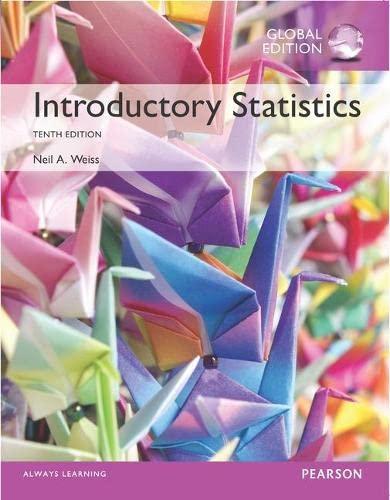Skinfold Thickness. A study entitled Body Composition of Elite Class Distance Runners was conducted by M. Pollock
Question:
Skinfold Thickness. A study entitled “Body Composition of Elite Class Distance Runners” was conducted by M. Pollock et al. to decide whether elite distance runners are thinner than other people.
Their results were published in The Marathon: Physiological, Medical, Epidemiological, and Psychological Studies, P. Milvey (ed.), New York: New York Academy of Sciences, 1977, p. 366. The researchers measured the skinfold thickness, an indirect indicator of body fat, of runners and nonrunners in the same age group. The data, in millimeters (mm), shown in the following table are based on the skinfold thickness measurements on the thighs of the people sampled.
Runners Others 7.3 6.7 8.7 24.0 19.9 7.5 18.4 3.0 5.1 8.8 28.0 29.4 20.3 19.0 7.8 3.8 6.2 9.3 18.1 22.8 24.2 5.4 6.4 6.3 9.6 19.4 16.3 16.3 3.7 7.5 4.6 12.4 5.2 12.2 15.6
a. For an F-test to compare the standard deviations of skinfold thickness of runners and others, identify the appropriate F-distribution.
b. At the 1% significance level, do the data provide sufficient evidence to conclude that runners have less variability in skinfold thickness than others? (Note: s1 = 1.798 and s2 = 6.606. For df = (19, 14), F0.01 = 3.53.)
c. What assumption about skinfold thickness did you make in carrying out the hypothesis test in part (b)? How would you check that assumption?
d. In addition to the assumption on skinfold thickness discussed in part (c), what other assumptions are required for performing the two-standard-deviations F-test?
Step by Step Answer:






